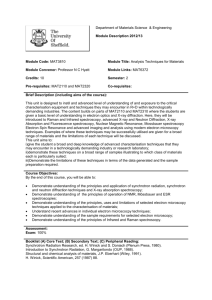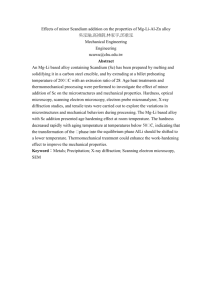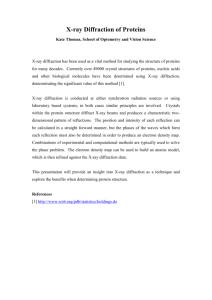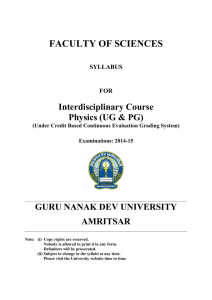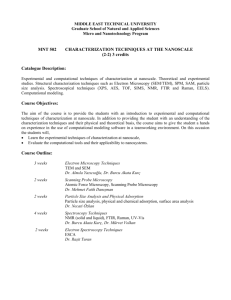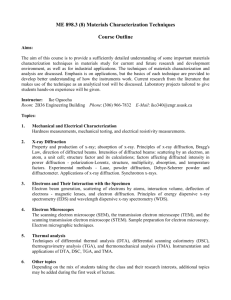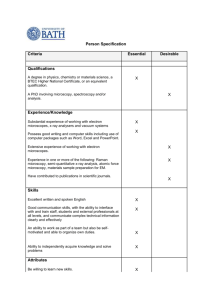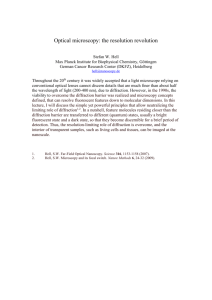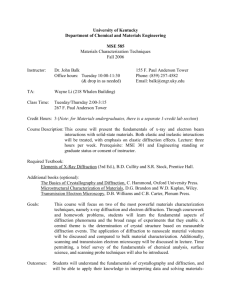MTSE 3020
advertisement
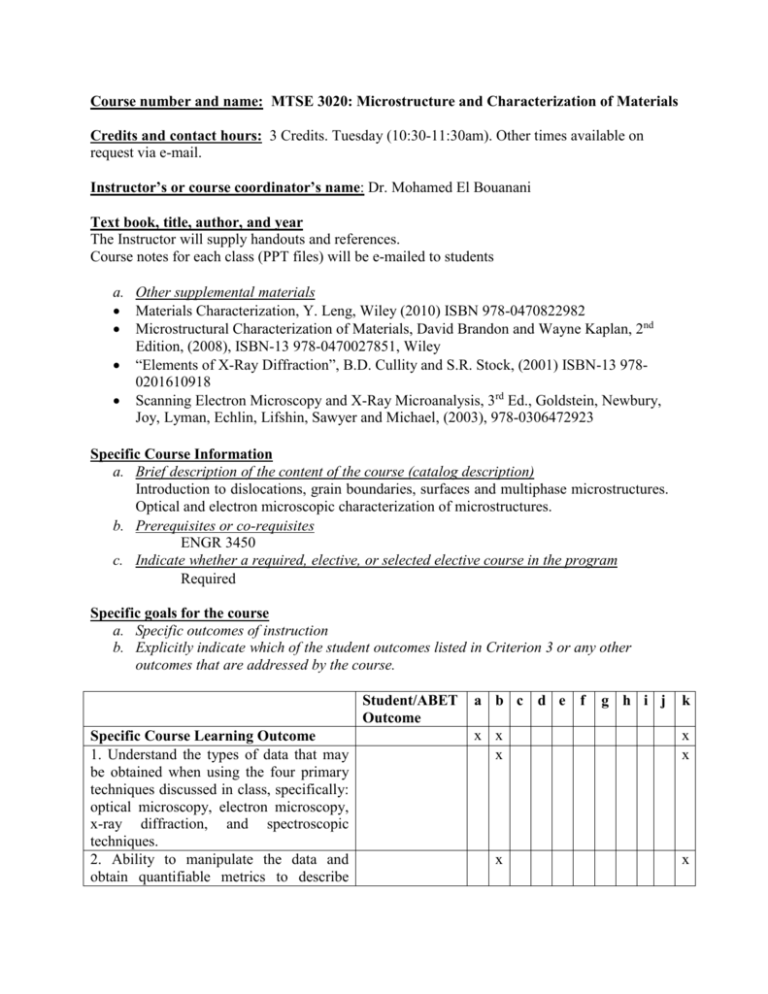
Course number and name: MTSE 3020: Microstructure and Characterization of Materials Credits and contact hours: 3 Credits. Tuesday (10:30-11:30am). Other times available on request via e-mail. Instructor’s or course coordinator’s name: Dr. Mohamed El Bouanani Text book, title, author, and year The Instructor will supply handouts and references. Course notes for each class (PPT files) will be e-mailed to students a. Other supplemental materials Materials Characterization, Y. Leng, Wiley (2010) ISBN 978-0470822982 Microstructural Characterization of Materials, David Brandon and Wayne Kaplan, 2nd Edition, (2008), ISBN-13 978-0470027851, Wiley “Elements of X-Ray Diffraction”, B.D. Cullity and S.R. Stock, (2001) ISBN-13 9780201610918 Scanning Electron Microscopy and X-Ray Microanalysis, 3rd Ed., Goldstein, Newbury, Joy, Lyman, Echlin, Lifshin, Sawyer and Michael, (2003), 978-0306472923 Specific Course Information a. Brief description of the content of the course (catalog description) Introduction to dislocations, grain boundaries, surfaces and multiphase microstructures. Optical and electron microscopic characterization of microstructures. b. Prerequisites or co-requisites ENGR 3450 c. Indicate whether a required, elective, or selected elective course in the program Required Specific goals for the course a. Specific outcomes of instruction b. Explicitly indicate which of the student outcomes listed in Criterion 3 or any other outcomes that are addressed by the course. Student/ABET Outcome Specific Course Learning Outcome 1. Understand the types of data that may be obtained when using the four primary techniques discussed in class, specifically: optical microscopy, electron microscopy, x-ray diffraction, and spectroscopic techniques. 2. Ability to manipulate the data and obtain quantifiable metrics to describe a b c d e f g h i j k x x x x x x x aspects of the material, including volume fraction and size of phases, lattice parameter, and composition 3. Understand the applicability of the four techniques, as well as their limitations, in quantifying microstructural features. 4. Knowledge of the role of composition and microstructure – as determined using these techniques. x x x Brief list of topics to be covered I. II. III. IV. Syllabus overview/General Introduction to Characterization Review of elements of structure (bonding, defects, phases, compositions) Topics on Optical microscopy Metallographic Preparation Techniques Resolution (Rayleigh criterion, pixel counts) Contrast Formation Digital Imaging Image Quantification – Stereology Examples of optical microscopy in applications Topics on Electron microscopy Basics of electron sources and vacuum Signal types (SE, BSE) Energy Dispersive Spectroscopy (EDS) How TEM fundamentally differs Examples of electron microscopy in applications Topics on X-ray diffraction Bragg’s Law Structure Factor Powder diffraction Textured diffraction Examples of X-Ray diffraction in applications Topics on Other Spectroscopies Using photon and ion probes X-Ray Fluorescence X-Ray Photoelectron spectroscopy Ion interactions with matter Rutherford Backscattering Spectroscopy Secondary Ion Mass Spectroscopy Examples of various spectroscopies in applications x
